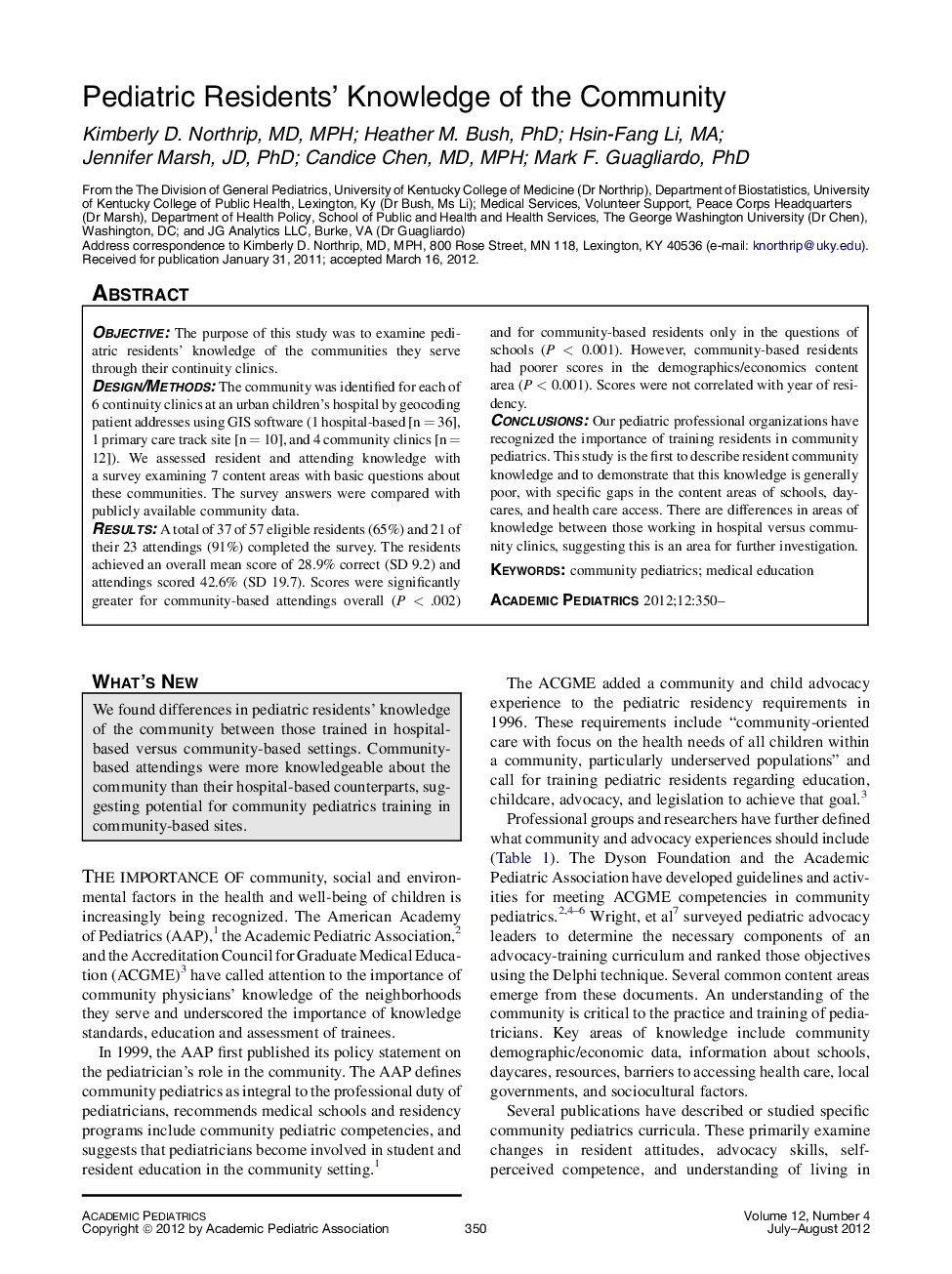| Article ID | Journal | Published Year | Pages | File Type |
|---|---|---|---|---|
| 4139874 | Academic Pediatrics | 2012 | 7 Pages |
ObjectiveThe purpose of this study was to examine pediatric residents’ knowledge of the communities they serve through their continuity clinics.Design/MethodsThe community was identified for each of 6 continuity clinics at an urban children’s hospital by geocoding patient addresses using GIS software (1 hospital-based [n = 36], 1 primary care track site [n = 10], and 4 community clinics [n = 12]). We assessed resident and attending knowledge with a survey examining 7 content areas with basic questions about these communities. The survey answers were compared with publicly available community data.ResultsA total of 37 of 57 eligible residents (65%) and 21 of their 23 attendings (91%) completed the survey. The residents achieved an overall mean score of 28.9% correct (SD 9.2) and attendings scored 42.6% (SD 19.7). Scores were significantly greater for community-based attendings overall (P < .002) and for community-based residents only in the questions of schools (P < 0.001). However, community-based residents had poorer scores in the demographics/economics content area (P < 0.001). Scores were not correlated with year of residency.ConclusionsOur pediatric professional organizations have recognized the importance of training residents in community pediatrics. This study is the first to describe resident community knowledge and to demonstrate that this knowledge is generally poor, with specific gaps in the content areas of schools, daycares, and health care access. There are differences in areas of knowledge between those working in hospital versus community clinics, suggesting this is an area for further investigation.
